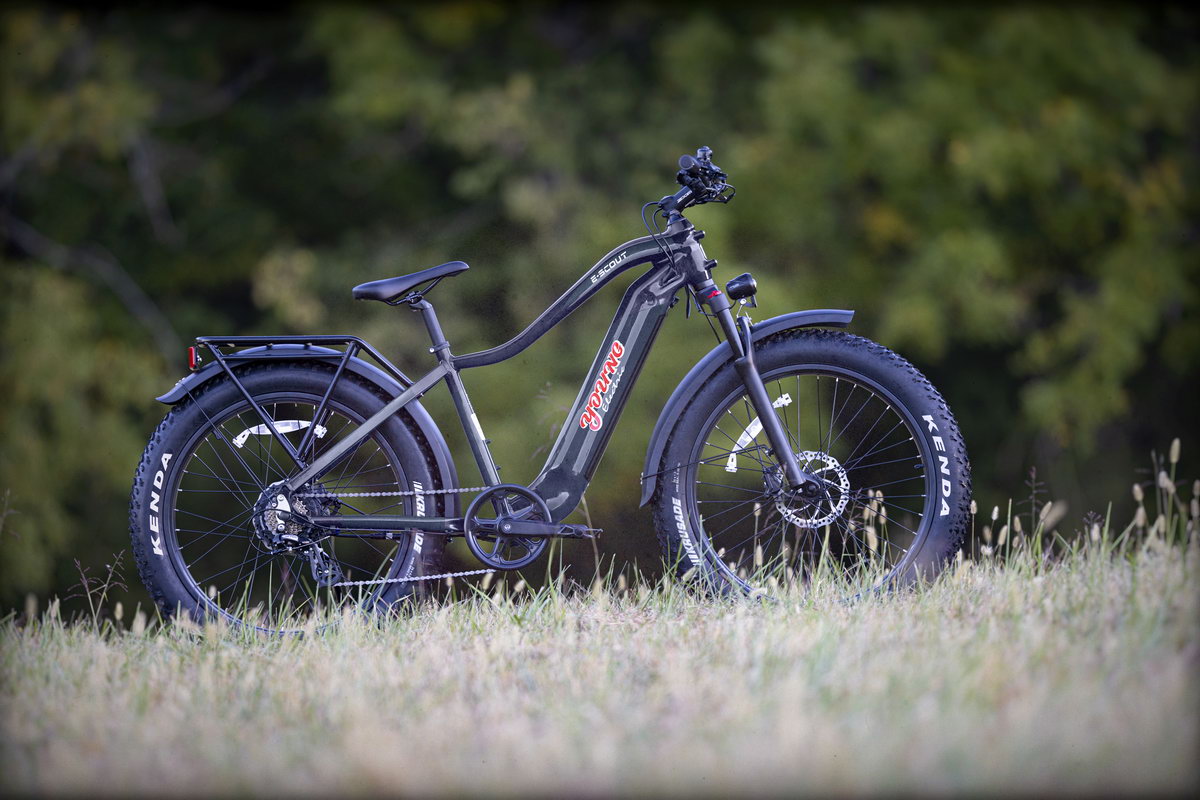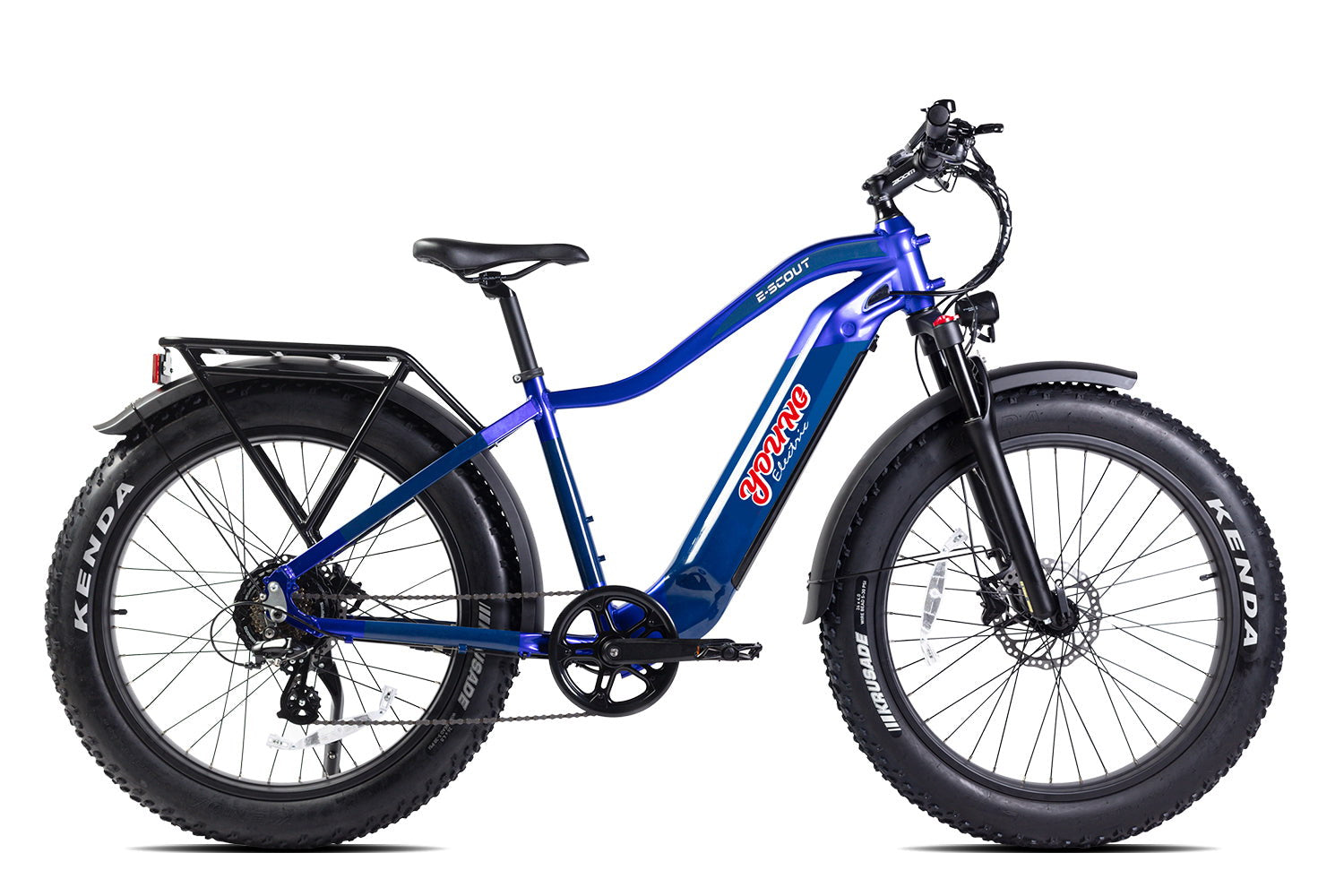The Features to Look for When Choosing a Long-Range Electric Bike
Are you planning on driving long distances off-road and don’t want to suffer from DOMS afterward? Fat tire ebike will be the perfect solution to these problems. Don’t be afraid of its size and weight as this type of e-bike is designed for long-distance touring without any discomfort. It can handle any obstacles on the road and help you save energy. If you’re thinking about getting your first long range ebike. It is preferable to note some of the main characteristics which depend on your riding experience.

If you need the service, could you get it for your e-bike?
One of the most important aspects of using an e-bike is regular maintenance. If there is no local e-bike repair service store, you need to consult the manual, purchase the corresponding maintenance tools and supplies, and maintain your e-bike to ensure that it works properly and extends its life cycle.
Upgrades and Aftermarket Parts
Another important aspect to consider is the updating and availability of spare parts. Depending on the manufacturer, road e-bikes may require regular software updates or the replacement of certain components. Before purchasing an electric bike, it is important to check the availability of spare parts for the model you are considering. Many e-bike riders also consider upgrading their bikes with aftermarket parts to enhance performance, increase range, or improve comfort.
Electric bikes, or hunting e-bikes, have become increasingly popular in recent years, and with good reason. They are a convenient and eco-friendly mode of transportation that can help you get around town faster and more easily than a traditional bicycle. However, like any vehicle, fat tire e-bikes can benefit from upgrades and aftermarket parts that can enhance their performance, comfort, and overall ride quality. In this article, we will explore some of the most popular upgrades and aftermarket parts for e-bikes.
The power of an electric bike’s motor
Power is the first thing you should look at when considering different hunting e-bikes. They all come in different power ratings like 250, 350, 500,750, and many other power combinations.
A 250-watt motor is the minimum power required for an e-bike to be classified as an electric bike in many countries. This power level is sufficient for low-speed commuting and leisure riding on flat or gently rolling terrains but may struggle with steep hills or heavier riders.
A 350-watt motor provides a bit more power and can handle steeper hills and heavier loads. This power level is suitable for most urban and suburban riding scenarios, including commuting, leisure riding, and light off-road use. Therefore it is perfectly suitable for the long-range e-bike.
A 500-watt motor is even more powerful and can handle steeper hills, heavier loads, and faster speeds. This power level is appropriate for more demanding riding scenarios, such as off-road trails or long-distance touring, and is a safe choice for a fat tire e-bike.
A 750-watt motor is the most powerful option available on most e-bikes and can provide exceptional performance, high speeds, and strong acceleration. This power level is typically found on high-end e-bikes designed for professional use or racing.
Hub, Mid-drive, and Friction Motor Types
The motor is another essential component of a hunting e-bike, and upgrading to a more powerful or efficient motor can significantly enhance your electric bike's performance. For example, you can upgrade from a hub motor to a mid-drive motor, which can provide the better hill-climbing ability and a more natural feeling pedal assist.
There are three main types of motors used in e-bikes: hub motors, mid-drive motors, and friction drive motors.
Hub Motors: Hub motors are located in the wheel hub and are the most common type of e-bike motor. They come in two main varieties: rear hub motors and front hub motors.
Mid-Drive Motors: Mid-drive motors are located near the e-bike’s bottom bracket and are connected directly to the e-bike’s chain. They provide better handling and balance and are generally more efficient than hub motors. What's more, mid-drive motors are also better suited for steep hills and off-road e-bikes.
Friction Drive Motors: Friction drive motors are attached to the rear or front tire of the e-bike and provide power by pressing against the tire. They are relatively low-cost and easy to install but can wear down tires quickly and are generally less efficient than hub or mid-drive motors.
How does an e-bike know when to give the power?
There are two main ways to control the power output of an e-bike: pedal-assist (PAS) and throttle.
PAS involves a sensor that detects the rider's pedaling motion and provides assistance through the motor. The more the rider pedals - the more assistance they receive from the motor. PAS is designed to provide a natural riding experience, as the motor assistance is directly linked to the rider's pedaling effort.
Its system uses sensors to detect when the rider is pedaling and automatically provide a boost of power from the motor. The level of assistance can usually be adjusted using a controller mounted on the cranks, allowing the rider to choose how much support they want from the motor. PAS systems are generally more efficient than throttle systems, as they only provide power when the rider is pedaling.
The throttle, on the other hand, is a hand-operated lever that allows the rider to control the motor's speed and power independently of their pedaling. With throttle, the rider can accelerate the electric bike without pedaling, or adjusting the level of motor assistance while pedaling. Throttle systems allow the rider to control the power output of the motor using a hand-operated throttle, similar to a motorcycle or scooter.
Both PAS and throttle have their advantages and disadvantages, and the choice between the two ultimately comes down to personal preference and riding style. Some riders prefer the natural feel of PAS, while others enjoy the convenience and control of the throttle.
Pedal Assist Systems: speed and torque sensors
The next step is to know the difference between a speed sensor and a torque sensor in the pedal assist. In an e-bike equipped with a PAS (Pedal Assist System), the motor’s speed and torque are crucial factors that determine the level of assistance provided to the rider. They both though have the main basic function that when you turn your cranks by pedaling, they're sensing the movement and help to propel the electric bike forward by telling the motor to go.
But there are two different types:
The speed sensor knows if we are pedaling and how fast but it doesn't know how hard you're pedaling. The rotational speed of the motor is measured in RPM (Revolutions Per Minute) and determines how fast the motor spins. Higher RPMs provide greater motor assistance, but can also drain the battery more quickly.
Torque-sensing can be found on higher-end electric bikes. They're typically built into the bottom bracket so when you're putting pressure on the crank and turning it around, it's detecting not just that you are pedaling in a certain motion but it's detecting how hard you are pedaling. The torque of the motor is a measure of its twisting force and determines how much power the motor can deliver. Higher torque allows the motor to provide more assistance, particularly when climbing hills or accelerating from a stop. So when you're putting in more effort – it helps more, when you do less – helps less. It feels more natural, like an extra boost.
Both speed and torque can be adjusted through the hunting e-bike’s controller or motor settings, allowing riders to customize their riding experience to their preferences and needs. All systems work perfectly fine, though torque sensors are typically found on a higher-end and more expensive e-bike, while the second ones are found on a cheaper electric bike.

Warranties that the battery you get is high-quality
There are many brands of electric bicycle batteries on the market, the better brands are Panasonic, LG or Samsung, choose which kind of electric bicycle battery, according to your needs. However, considering the long range endurance factor, the choice of battery is an important element.
Today, with all of the good lithium-ion batteries we can choose for electronic bikes, it's best for us to stay away from old technologies and no-name generic brand cells.
Battery style: proprietary or not?
If and when your e-bike battery dies – how easy is it going to be to replace it?
By having a more generic style of lithium-ion battery that mounts to the frame – not only you can find this type of battery from another vendor, but if it's necessary, you can also unbolt the cradle that goes with this battery and replace it with something entirely new.
Although some types of batteries have a special BMS - that's a circuit in the battery that helps to protect it from low voltage or over current – that it actually can't be easily replaced because of electrical communication that has to happen for the electric bike to operate.
Battery capacity is one of the most important characteristics
Trying to find a perfect long-range e-bike you’ll often see claims about voltage, sometimes Amp-hours and watt-hours. It can be difficult to understand how to compare them.
The formula to compare any e-bike on the internet is pretty simple.
V × ah = watt-hours
For example, we have a battery with a voltage of 36V and 10Ah. The watt-hours would be 360Wh.
And for comparison the second one we have with a voltage of 48V and also 10Ah. The watt-hours would be 480Wh already.
These were the main characteristics that are worth paying attention to at such an expensive purchase, because the range of your off-road e-bike and the comfort of your ride depend on them. Don’t forget to take these tips and use them when choosing your perfect e-bike!


Leave a comment